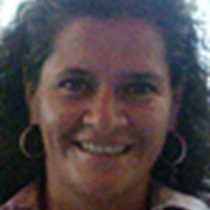San Cristobal Island
As we walked up throughout the canyon we could not be more amazed at how these magnificent formations had formed, all as a result of one volcanic event. San Cristobal is one of the very old islands of the Galápagos group, and places like Punta Pitt are quite common. The formations are made out of volcanic tuff – the encounter of the hot boiling lava with the cold temperatures of the ocean produce steam that has miniature particles of ash that compact up, making layers and layers of material that erodes with time and makes the sand of the nearby beaches.
The beach at Punta Pitt, which we visited this morning, is made out of olivine, one of the hard crystals that make up the mantle of the earth, but in this particular case, became incredibly soft, green sand. The little beach had a very interesting male sea lion colony that kept making us know that they were the owners of the place.
At the end of the trail, a small colony of red-footed boobies surprised us. Birds facing the difficult conditions of the season were patiently taking care of the single chick on their nests. Perching by itself on an solitary branch we found a chick that had been left alone on the nest, it had grown considerably so it was not going to be taken by the frigatebirds… the chick, of course, did not know that and played dead most of the time just to make sure it wasn’t taken.
As we got into the water around Leon Dormido, or Kicker Rock, in the afternoon, a school of Galápagos sharks welcomed us for our very last snorkel of the week. Sea turtles, sea lions and different species of Galápagos reef fish kept us swimming around this spectacular rock.
What an incredible week we have all had in this living laboratory of evolution. It is time to go home now, but we have witnessed why humankind needs to keep this place the way it is – this paradise needs to be conserved so future generations will get to see it too.




